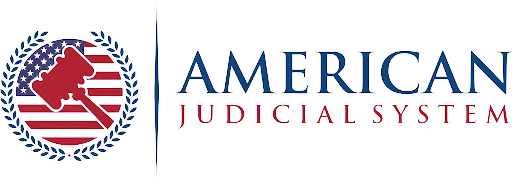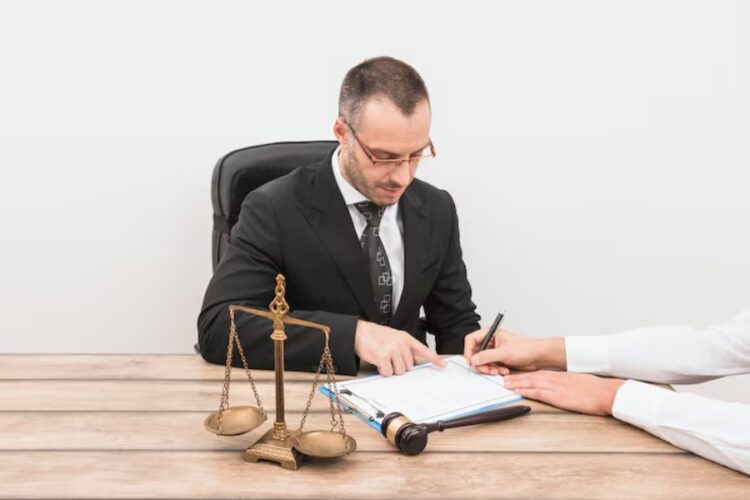The matter of discrimination persists across various institutions, communities, and workplaces. Individuals and groups often face bias and unfair treatment based on race, gender, age, disability, sexual orientation, or religious beliefs. A lawyer for discrimination offers protection to those who experience such unfair treatment in several areas. This article provides detailed information on the role of legal professionals in discrimination cases, examines recent data and statistics, outlines essential steps when seeking legal support, and discusses legal strategies deployed in these sensitive cases.
Understanding the Role and Responsibilities of a Lawyer for Discrimination
A lawyer for discrimination protects individuals, ensuring that legal rights remain intact. These lawyers often represent claimants in civil rights cases and employment disputes. They work in different settings such as private legal practice, non-profit organizations, and government agencies. Their role includes interpreting legislation, guiding individuals through the legal process, and representing their clients in negotiations and court proceedings.
These legal experts carry out various tasks such as:
• Analyzing evidence and documents to build a strong case
• Investigating claims and liaising with relevant bodies
• Advising on procedural steps and potential outcomes
• Negotiating settlements or litigating discrimination claims before courts
Establishing a strong case typically involves evidence gathering, witness interviews, and careful review of employment records or institutional policies. Lawyers for discrimination must keep abreast of evolving legal standards and benchmark judicial decisions.
Defining Discrimination in Legal Terms
Legal definitions outline discrimination as unfavorable treatment and bias against individuals due to their inherent traits. Statutes such as the Civil Rights Act, Americans with Disabilities Act, and Age Discrimination in Employment Act form the legal framework that protects individuals. These laws offer a foundation for litigation and lay out regulations that employers and institutions must follow.
Legal precedents and judicial determinations serve as reference points in discrimination cases. Lawyers for discrimination study these cases to understand how past rulings affect current claims. In practical terms, legal experts use these standards in contexts where an individual faces unfair treatment in employment, housing, education, or public services.
A vital aspect of handling discrimination cases is the efficient presentation of evidence. Lawyers compile records, communications, testimonies, and other proofs that highlight instances of bias or exclusion. Courts review this evidence to gauge clear patterns of discrimination.
Impact of Discrimination on Affected Communities
Experiences of discrimination extend beyond the workplace or academic institution. They can harm an individual’s mental and physical well-being. A lawyer for discrimination not only facilitates legal redress but also helps protect an individual’s dignity when confronted with repeated bias. In instances where systemic discrimination is evident, clients tend to pursue legal redress with the assistance of experienced attorneys.
Researchers have provided data reinforcing the social and economic costs of discrimination. An extensive review conducted by independent organizations found that discrimination often produces long-lasting effects on mental health, limits career advancement, and reduces access to vital services. The following table outlines statistics compiled for discrimination claims over the past several years:
| Year | Reported Discrimination Claims | Cases Resolved in Favor of Plaintiffs | Average Settlement ($) |
|---|---|---|---|
| 2018 | 12,500 | 3,250 | 75,000 |
| 2019 | 14,000 | 3,900 | 80,500 |
| 2020 | 15,200 | 4,100 | 82,000 |
| 2021 | 16,800 | 4,500 | 85,000 |
| 2022 | 17,500 | 4,700 | 87,000 |
The table reveals a trend where the number of discrimination complaints has risen, and so is the average settlement figure, reflecting both growing awareness and judicial inclination to favor victims of discrimination.
Why Legal Support Matters in Discrimination Cases
Professional legal representation in discrimination cases protects the interests of individuals facing bias. A specialized lawyer provides an independent perspective and guides clients through legal processes. The expertise that comes with handling specialized discrimination claims is critical.
Clients experiencing discrimination benefit from structured legal advice. Lawyers can clearly explain the available legal options, potential outcomes, and the steps involved in pursuing legal claims. They offer guidance about filing complaints with relevant institutions, such as the Equal Employment Opportunity Commission (EEOC) or the Department of Justice. These agencies assist in ensuring that rights under anti-discrimination laws are safeguarded.
A lawyer for discrimination evaluates the strengths and weaknesses of a case and determines the best course of action. This assessment includes analysis of:
• Available evidence and documented incidents
• The financial impact caused by discriminatory practices
• The possibility of achieving a timely resolution through negotiation
• Prospects of success at trial if necessary
When discrimination occurs, immediate legal guidance proves beneficial. A clear understanding of deadlines, particularly in regulated cases, helps prevent the dismissal of claims on technical grounds.
Steps to Take When You Suspect Discrimination
Anyone who believes that they have been subjected to discrimination should begin by documenting all incidents thoroughly. Maintaining a record of dates, conversations, and witnesses provides valuable evidence. This documentation can include emails, text messages, performance reviews, and other recorded communications.
Legal consultations for discrimination cases often follow these steps:
- Initial Case Review: A lawyer reviews the evidence and clarifies frequently complex legal terms.
- Filing a Formal Complaint: Legal experts prepare necessary documentation to approach agencies such as the EEOC.
- Negotiation Stage: Many cases resolve through discussions between involved parties to reach an agreement that compensates for harm.
- Litigation: In cases where negotiations fail, lawyers represent the individual in court proceedings.
Clients should consider scheduling consultation as soon as possible following any discriminatory behavior. Prompt legal action helps avoid complications arising from delays and documentation issues. Lawyers for discrimination strive to resolve claims efficiently, focusing on protecting the well-being of clients while seeking justice.
Legal Strategies Employed in Discrimination Cases
In handling discrimination matters, legal experts employ distinct strategies. Early settlement discussions focus on swift and fair compensation. Some lawyers advise clients to settle because reaching a resolution often stops further emotional distress. In other scenarios, moving a case through the litigation process proves better for public accountability.
Lawyers carefully assess elements of evidence, such as:
• Detailed records of incidents and communications
• Relevant workplace policies or public institution practices
• Personal records that document changes in responsibilities or practice
• Witness testimonies that corroborate claims
These strategies combine meticulous preparation with proactive advocacy. Lawyers for discrimination draft robust legal arguments and reduce the risk of claims falling apart due to procedural technicalities. The following table compares several typical aspects in discrimination litigation cases and their potential outcomes:
| Litigation Aspect | Key Considerations | Potential Outcome |
|---|---|---|
| Evidence Collection | Documentation of incidents and witness statements | Stronger case foundation |
| Legal Argument Framework | Alignment with established legal precedents and statutory laws | Increased chances of success |
| Negotiation with Opposing Parties | Assessing business interests and willingness to compensate | Settlement or structured settlement |
| Courtroom Presentation | Factual presentation and adherence to legal rules | Formal judgment or mandated remedies |
In each case, the lawyer for discrimination develops strategies based on the specifics of the situation. Effective advocacy relies on a deep understanding of both statutory and case law. This knowledge not only strengthens the client’s claim but also deters future discrimination practices among institutions.
Challenges Faced by Lawyers Handling Discrimination Cases
Legal professionals encounter distinct obstacles in discrimination-related cases. Asserting unfair treatment claims in heterogenous institutional settings poses challenges. Evidence might be subtle or poorly documented, and sometimes victims delay reporting incidents due to a perceived fear of retaliation.
One challenge arises from proving intent. Demonstrating that actions occurred with discriminatory motives requires verifying context, timing, and patterns of behavior. Lawyers often work with multiple forms of evidence to establish a strong link between institutional practices and the client’s experience.
Institutional policies may hinder discrimination claims if they impose strict criteria on acceptable behavior. Lawyers for discrimination carefully review internal policies and guidelines to identify potential breaches of statutory law. These legal professionals sometimes deal with complex litigations that span across jurisdictions and require collaboration with experts outside the legal field.
Some common challenges include:
• Gathering reliable evidence, especially if incidents occurred over a long period.
• Addressing counterarguments presented by institutions that claim neutral policies.
• Handling the emotional distress clients experience, which may affect evidence and testimonies.
• Facing resource constraints when representing multiple clients with similar claims.
Legal offices often strive to secure supportive evidence by employing expert witnesses. Psychological evaluations, human resources policies, and digital records all contribute to strengthening a case. Lawyers for discrimination often recommend that individuals document any incident immediately and consult professionals who can provide relevant support.
Historical Trends in Discrimination Litigation
Discrimination litigation has a long history in legal systems known for protecting individual rights. Pioneering cases contributed to the establishment of statutory protections in areas such as employment, education, and public services. Reviewing historical trends reveals progress as well as challenges that persist today.
As social awareness increases, so does the accountability of institutions. Data reveal a rise in discrimination claims over recent years. Increasing diversity among the workforce has led to more claims, with legal turnover rates higher among employees who feel unsupported. Recent cases in higher education and public services remind us that vigilance remains necessary.
A historical review indicates that many landmark cases have paved the way for further legal protection. Data gathered over the years show shifts in public policy as legal decisions influenced employment and public relations. The following table illustrates some statistical trends observed in discrimination litigation over the last decade:
| Year | Total Discrimination Claims | Cases Resolved Favorably for Claimants | Average Duration of Case (Months) |
|---|---|---|---|
| 2013 | 10,000 | 2,800 | 14 |
| 2015 | 11,200 | 3,100 | 13 |
| 2017 | 12,800 | 3,500 | 12 |
| 2019 | 14,500 | 3,900 | 11 |
| 2021 | 16,300 | 4,300 | 10 |
The table demonstrates a steady increase in both the number of claims and the cases resolved favorably for clients. It also suggests a decrease in the duration of cases, indicative of a more responsive legal process in recent times.
Case Studies and Examples
Several cases exemplify the critical role of a lawyer for discrimination. In one instance, an employee in a major corporation faced repeated discriminatory remarks over several years. Upon gathering evidence and consulting a legal expert in discrimination, the employee secured a settlement that addressed financial and emotional damages. Detailed documentation encompassed emails, testimonials, and performance reviews, which lent credibility to the claim.
Another case involved a student who experienced racial bias at an educational institution. Here, legal representation focused on internal policies that the institution failed to uphold. This case triggered an investigation into institutional practices and resulted in policy changes that benefited a broader student community. In both examples, professional legal guidance steered the claim to a constructive resolution.
These examples illustrate that discrimination claims are not solely about financial compensation. They also affect change at institutional levels. Successful cases often lead to improved policies and training programs that foster a fairer environment for all individuals.
Choosing the Appropriate Lawyer for a Discrimination Case
Selecting a lawyer with experience in discrimination cases requires careful consideration. Prospective clients should review the lawyer’s experience, background, and track record in similar cases. Initial consultations often involve discussing previous litigation outcomes, the lawyer’s strategy, and potential timelines for resolution.
Essential factors to evaluate include:
• Legal Experience: Look for a lawyer with significant case work in discrimination matters.
• Client Testimonials: Prior client experiences serve as an indicator of a lawyer’s approach and success rate.
• Transparent Communication: The lawyer should provide clear, straightforward information regarding fees, timelines, and expected outcomes.
• Specialization: Some law practices concentrate solely on discrimination law. The more specialized the lawyer, the better they understand the nuances of these cases.
In-depth research often involves reviewing professional profiles, published articles, and case studies from law firms known for discrimination litigation. Legal directories, bar association directories, and independent legal review platforms provide useful insights.
The following table compares various aspects that potential clients should consider when reviewing lawyers for discrimination cases:
| Evaluation Criteria | Description | Considerations for Clients |
|---|---|---|
| Experience in Discrimination Law | Number of years practicing discrimination law | Look for specialized expertise in handling similar cases |
| Success Rate in Litigation | Rate of successful outcomes in discrimination cases | Confirm reliability through client testimonials |
| Fee Transparency | Clarity on fee structure and possible costs | Avoid hidden fees or unclear billing practices |
| Client Communication | Availability and clarity of legal advice | Ensure the lawyer explains processes clearly and avoids ambiguity |
Evaluating these criteria ensures that the individual receives competent legal guidance tailored to the specifics of their case. Clients are encouraged to arrange initial consultations with multiple professionals before deciding which legal approach best meets their needs.
How Lawyers for Discrimination Prepare Their Cases
Preparation for discrimination cases follows a detailed, structured methodology. Legal professionals begin by gathering all evidence and verifying its authenticity. They thoroughly review incident reports, internal communications, and human resources policies. This investigation results in a comprehensive case file that outlines each instance of discrimination.
The preparation process includes:
• Reviewing documentation for accuracy
• Identifying witnesses and arranging interviews
• Consulting expert opinions where necessary
• Mapping out the timeline of discriminatory incidents
Attentiveness to procedural requirements proves crucial. Lawyers adhere to statutory deadlines and file complaints with appropriate agencies. They provide guidance on preserving digital evidence and personal records. Accuracy in documentation often influences case outcome significantly.
Legal research plays a significant role during case preparation. Lawyers examine similar claims, review legal precedents, and clarify questions pertaining to statutory interpretations. This ensures that arguments remain coherent, well-supported, and aligned with current legal standards.
The integration of technology assists lawyers in compiling evidence systematically. Digital tools help in organizing communications, managing large sets of data, and storing records securely. Lawyers trained in technology use methods that both preserve client information and streamline case preparation.
Recent Legislative Developments and Their Impact
Legislation that governs discrimination continues to evolve. Lawmakers frequently review and amend anti-discrimination laws to reflect changing societal attitudes and modern challenges. Recent legislative updates enhance legal avenues for those affected by discrimination, ensuring that guidelines remain fair, comprehensive, and adaptive.
Recent changes include adjustments in the definitions of discriminatory practices and the extension of rights to emerging protected categories. Legal professionals monitor these developments closely. Ongoing training and referencing updated statutory provisions allow lawyers to align their litigation strategies with the current legal climate.
Data from government agencies indicate that legislative revisions have led to a higher filing rate of discrimination claims. Updated policies inspire a sense of renewed optimism among underserved groups. The following table provides an overview of recent legislative changes along with reported impacts:
| Legislative Change | Description | Impact on Claims |
|---|---|---|
| Expanded Protected Categories | Inclusion of additional demographic groups | Higher filing rates among newly recognized groups |
| Revised Guidelines for Evidence | Clearer standards for documentation of discrimination | Improved success in evidence-based claims |
| Enhanced Penalties for Violators | Increased fines and sanctions for discriminatory actions | Increased deterrence and proactive adjustments in policies |
These trends underscore a commitment to fostering a legal system that reflects contemporary societal values. Lawyers for discrimination need to update their practice continuously in light of these changes.
Financial Considerations for Discrimination Litigation
Finances become a crucial element when legal action ensues. Individuals may worry about the costs associated with hiring experienced attorneys. Many law firms offer contingency fee arrangements in discrimination cases, meaning fees are only charged when a case achieves a favorable outcome. This approach aids those who may have limited financial resources.
A detailed understanding of fee structures helps clients plan accordingly. Discussions regarding potential expenses should occur during initial consultations. Lawyers often explain the breakdown of costs related to legal filings, expert testimonies, document preparation, and court proceedings.
Some firms provide flexible payment plans or offer pro bono legal assistance when cases involve severe abuse of rights. Clients should request detailed fee statements and review them before formally engaging legal representation.
In a sample survey of clients who pursued discrimination litigation, the following table compares average legal fees and costs:
| Fee Structure | Percentage / Rate | Average Client Cost (if any) |
|---|---|---|
| Contingency Fee | 25-30% of total settlement | Minimal upfront cost; fees contingent on result |
| Hourly Rate | $200-$450 per hour | Varies based on case complexity |
| Flat Fee for Consultation | $100-$300 per session | Initial consultation fee only |
| Pro Bono Agreements | Not applicable | Free or reduced cost for eligible clients |
This table offers a clear view of various fee structures. Clients can compare options and choose the representation that best matches their financial and case-specific needs.
Challenges in Proving Discrimination
Proving discrimination involves validating circumstantial evidence with corroborative documentation. Lawyers work on building a timeline supported by internal communication records, witness statements, and performance reviews. The challenge often stems from the nature of discrimination incidents, which might be subtle and undocumented unless addressed immediately.
One method that lawyers implement is to build parallel cases by collecting similar instances experienced by multiple persons. Consistency among various claimants strengthens the overall argument and diminishes the possibility of the evidence being dismissed. Lawyers must compile diverse types of evidence, ranging from written documentation to digital communications, to create a coherent narrative.
An additional challenge arises when confronting institutional denial. Many organizations claim neutrality by deferring responsibility and blaming ambiguous policies. In such cases, lawyers must highlight discrepancies between stated policies and actual practices.
Overcoming these challenges demands thorough planning and relentless follow-up. Precision in collecting evidence and persistence during negotiations often yield positive outcomes. Legal experts enable clients by presenting persuasive evidence that clarifies discriminatory practices.
Working with Expert Witnesses
Expert witnesses play a supportive yet significant role in discrimination cases. Their opinions often provide critical data and opinions that support the client’s claim. Medical professionals, human resource consultants, and academics specializing in discrimination trends sometimes testify about the negative effects of discrimination.
Expert contributions include:
• Evaluating the psychological impact on the victim
• Reviewing organizational policies for alignment with legal norms
• Documenting systemic issues within organizations
• Providing statistical and research data that validates individual experiences
Lawyers collaborate with these experts to present comprehensive evidence. Expert testimony can influence judges and juries by substantiating claims with specialized knowledge. The process requires selecting individuals whose credentials align with the issues at hand, along with preparing them adequately for courtroom presentations.
Expert witnesses boost the credibility of the case. Their detailed reports, analysis, and opinions provide clarity in instances where the evidence might be open to interpretation. Professional legal teams appreciate the support offered by experts when constructing a robust litigation strategy.
Community Impact and Social Significance
Discrimination cases affect communities directly and indirectly. Successful legal actions may result in improved workplace and institutional policies. They promote a sense of justice that extends beyond individual cases, often encouraging other victims to pursue redress. Legal victories in discrimination cases set precedents and empower broader community interventions.
A lawyer for discrimination also plays a role in educational efforts, informing both employers and employees about acceptable workplace practices and legal consequences of bias. Legal consultations often include recommendations to improve internal policies, training programs, and hiring procedures.
Communities benefit not just from the resolution of individual claims but also from broader policy reforms. Legal interventions frequently lead to administrative changes that decrease overall incidents of discrimination. This good outcome strengthens community ties and fosters clearer communication regarding acceptable practices and behavioral norms.
With consistent legal pressure, organizations recognize the importance of transparent practices. Legal cases that receive public attention often lead to reforms in human resource policies and employee training protocols. These outcomes emphasize accountability and improve working conditions for everyone involved.
Advice for Individuals Considering Legal Action
Individuals who suspect bias can take several actions to protect their rights swiftly:
• Document all incidents meticulously.
• Review company policies regarding discrimination and harassment.
• Gather witness statements or any supportive materials immediately.
• Seek an initial consultation with a lawyer experienced in handling discrimination cases.
Early legal advice equips individuals with knowledge about available options. Consulting a lawyer helps clarify the necessary procedures and deadlines that shape the course of the claim. It is crucial that individuals remain proactive and seek support promptly, as the window for filing claims might close quickly.
A lawyer for discrimination can help clients map out possible courses of action, whether that involves filing a complaint with the EEOC, pursuing a settlement outside of court, or preparing for trial proceedings. Legal guidance not only clarifies procedural aspects but also empowers individuals by showing them that their concerns hold legal merit.
Taking measured and deliberate steps helps reduce the risk of additional harm and ensures that the claim receives appropriate attention. Individuals are encouraged to act quickly and record every interaction to build a compelling case.
Resources and Support Systems for Affected Individuals
Support is available through various organizations and legal aid groups. Many non-profit organizations focus on combating discrimination by providing legal advice, emotional support, and guidance. Government agencies such as the Equal Employment Opportunity Commission (EEOC) or the Department of Justice operate complaint channels that offer assistance and further guidance.
Local community organizations, such as legal clinics, advocate for victims of discrimination while offering free or low-cost legal consultations. Professional associations often provide resources such as online guides, legal hotlines, and workshops to educate individuals about their rights. Access to these resources aids in reducing the emotional and logistical stress that accompanies discrimination claims.
The following list illustrates some critical resources available:
• National Legal Aid & Defender Association – Offers legal assistance and advocacy programs.
• American Civil Liberties Union (ACLU) – Provides resources and legal guidance for discrimination matters.
• Local Bar Associations – Often hold free legal service events and initial consultations.
• Community Legal Clinics – Offer support specifically for marginalized groups experiencing discrimination.
These resources aim to empower those who experience discrimination. They provide essential information that can guide individuals through the complexities of legal filings and present additional options when legal representation appears delayed or unaffordable.
Advice for Employers and Institutions
Employers and institutions also face legal responsibilities when addressing discrimination. Creating an environment that discourages discriminatory practices benefits both employees and organizations. Legal professionals note that implementing structured policies, conducting regular training sessions, and establishing internal review procedures significantly reduces the incidences of discrimination.
Key recommendations for organizations include:
• Conduct regular audits of internal policies to verify compliance with anti-discrimination laws.
• Provide training sessions that focus on recognizing and mitigating bias in the workplace.
• Establish clear and safe reporting channels for employees.
• Engage external experts to assess internal practices and suggest improvements.
Organizations that commit to fair treatment build a robust, diverse workforce that improves overall performance and satisfaction. Lawyers for discrimination advocate for internal reforms and support cases where procedural oversight contributes to systemic bias. These measures improve trust and foster a work environment that prioritizes fairness.
Legal compliance benefits institutions by minimizing the risk of litigation. An organization that demonstrates commitment to equal treatment is less likely to experience repeated claims of discrimination, protecting its reputation while ensuring employee well-being.
Future Prospects for Legal Advocacy in Discrimination Cases
Legal advocacy for discrimination remains an evolving field, with ongoing changes in statutory laws and court interpretations. Increasing awareness about discriminatory practices will likely lead to refined legal strategies and clearer judicial guidelines. Legal professionals continue to follow new trends, such as expanded protections for historically marginalized populations and improvements in evidence collection techniques.
Public opinion influences the regulatory environment, compelling institutions to adopt policies that promote fairness. A lawyer for discrimination remains at the forefront of these advancements, continually updating their practices to reflect changes in the legal framework. The sustained focus on equality often drives reforms that benefit individuals alongside institutional improvements.
An emphasis on technology, digital evidence, and improved communication methodologies offers promising prospects for both legal teams and their clients. Lawyers integrate new tools to capture and store evidence, ensuring documentation remains secure and unaltered. This approach reduces disputes over evidence reliability and fosters more accurate assessments of each claim.
The evolution of legal advocacy is also influenced by ongoing societal debates and legislative updates. As lawmakers reassess protections against discrimination, legal professionals tailor their approaches to align with the latest reforms. This continuous adaptation ensures that legal remedies remain both accessible and effective.
Impact on Broader Legal and Social Systems
Successful discrimination cases often have effects that transcend individual instances. Legal victories in high-profile discrimination cases encourage other potential claimants by outlining clear examples of justice served. They inform public debate and lead to substantive reforms in company policies and institutional procedures.
Lawyers for discrimination contribute to shaping broader legal and social frameworks by setting precedents that guide future clinical actions. Publicized cases serve as reminders to employers and other entities that discrimination will attract legal scrutiny. Such outcomes improve practices not only at the workplace level, but also in educational institutions, public organizations, and community groups.
The consequences of successful litigation include policy adjustments, increased training provisions, and improved grievance mechanisms. Each case that reaches a favorable outcome instills confidence among other affected individuals that justice remains attainable. Ongoing legal education efforts facilitate a more informed public and better align institutional practices with established rights.
Legal advocacy for discrimination has inspired changes in both public perception and the methods used to address bias. Engaging a lawyer for discrimination often sets a benchmark for how similar cases should be handled, leading to more efficient mediation processes and structured solutions tailored to foster accountability.
Final Thoughts on the Role of Lawyers in Combating Discrimination
The role of a lawyer for discrimination proves critical in protecting rights and advancing fairness. Legal support enables individuals to voice their claims, ensuring that systemic issues receive the necessary scrutiny. The data and insights detailed in this article offer a framework for understanding the nuances of these cases, from evidence collection to the presentation of established legal arguments.
Experienced legal professionals remain dedicated to defending the rights of those affected by discriminatory practices. Their work stimulates improvements at individual, organizational, and community levels. By scrutinizing documented evidence and drawing on judicial precedents, lawyers for discrimination help shape policies that promote more supportive and safe environments.
Individuals who face discrimination benefit from timely legal advice that clarifies actionable steps. Likewise, employers and institutions gain insight by reviewing policies with guidance from legal experts, reinforcing strategies that reduce the chance of discriminatory incidents.
The ongoing transformation in legal advocacy, enhanced by accurate data and community engagement, brings promise for improved rights protection. Both clients and legal professionals benefit from a framework built on verified evidence, transparent processes, and a continued commitment to fairness. The legal community’s dedication remains strong as efforts in defending against discrimination continue to set standards that promote justice for all.
The discussion presented in this article underscores the importance of legal support in discrimination cases. It also reinforces that a lawyer for discrimination serves as a key facilitator in protecting individual rights, steering changes within organizations, and thereby supporting broader societal reforms. The interplay of documented evidence, strategic legal preparation, and continuous legislative evolution ensures that discrimination cases receive careful review and thorough consideration by the courts.
The insights offered here align with evolving legal standards, consistent judicial interpretations, and documented case studies that provide concrete examples of how discrimination cases transfer from complaint to remedy. Individuals considering legal action can derive actionable steps, while institutions can improve their internal mechanisms to prevent further reports of bias.
Legal advocacy remains a cornerstone in the pursuit of justice. Supported by verified data and detailed case studies, these legal professionals provide guidance, clear communication, and unwavering defense to those affected by discrimination. The result is not merely a win in a single case but a cascading effect that enhances legal practices, instills public awareness, and reinforces accountability across communities.
This detailed examination affirms the importance of having specialized legal support when discrimination claims arise. It explains how thorough documentation, expert guidance, and updated legal practices are essential. Ultimately, lawyers for discrimination secure positive outcomes that benefit individual claimants while also contributing to meaningful changes in broader institutional policies.
With the ongoing interplay of public policy updates, evolving evidence collection methods, and consistent case law development, attorneys continue to advocate for a fair and just legal process. The need for experienced legal professionals persists, and those navigating discrimination claims will find support through meticulous legal processes that emphasize both accountability and corrective reforms.
A comprehensive legal strategy in discrimination matters reinforces both individual rights and collective progress. By following structured case preparation, engaging expert witnesses, and employing transparent communication with clients, legal professionals help maintain the integrity of the justice system. This integrity builds trust among individuals who have experienced bias, and it encourages timely and effective legal redress.
As society continues to confront issues of unfair treatment, many will depend on qualified legal professionals who not only understand the intricacies of anti-discrimination laws but also demonstrate a firm commitment to achieving equitable outcomes. Their expertise ensures that wrongful practices face scrutiny, that affected individuals receive fair compensation, and that corrective measures get implemented at institutional levels.
The ideas explored in this article serve as a resource for individuals, legal practitioners, and institutions alike. Through detailed evaluations, comprehensive resources, and transparent discussions on fee structures and evidence collection, readers gain insights that aid both preventive and responsive measures in discrimination cases.
The legal framework that guides discrimination cases remains robust but requires continuous reinforcement through diligent legal practice and proactive institutional policies. As more cases lead to systemic changes, the role of a lawyer for discrimination evolves to include lobbying for better legal standards, participating in community education, and representing claimants with precision and care.
In conclusion, while navigating through the intricacies of discrimination law presents challenges, experienced legal professionals deliver solutions that uphold fairness and inspire broader institutional reforms. Individuals facing bias find reassurance in structured legal strategies, while employers and policy-makers benefit from enhanced clarity regarding legal expectations. This collective effort benefits society by fostering a fairer environment for future generations.
The detailed analysis offered here underscores that effective legal representation in cases of discrimination is not merely a legal necessity but a social imperative. Those affected see their rights defended through litigation, settlement, and policy innovation. Legal advocacy continues to shape the future by encouraging institutions to reflect on and, when needed, correct practices that may contribute to unfair treatment.
By maintaining a focus on factual evidence, strategic case preparation, and comprehensive support systems, lawyers for discrimination create a legal environment where justice prevails. The legal community remains devoted to these principles and continues to offer expertise that results in constructive and lasting changes.










